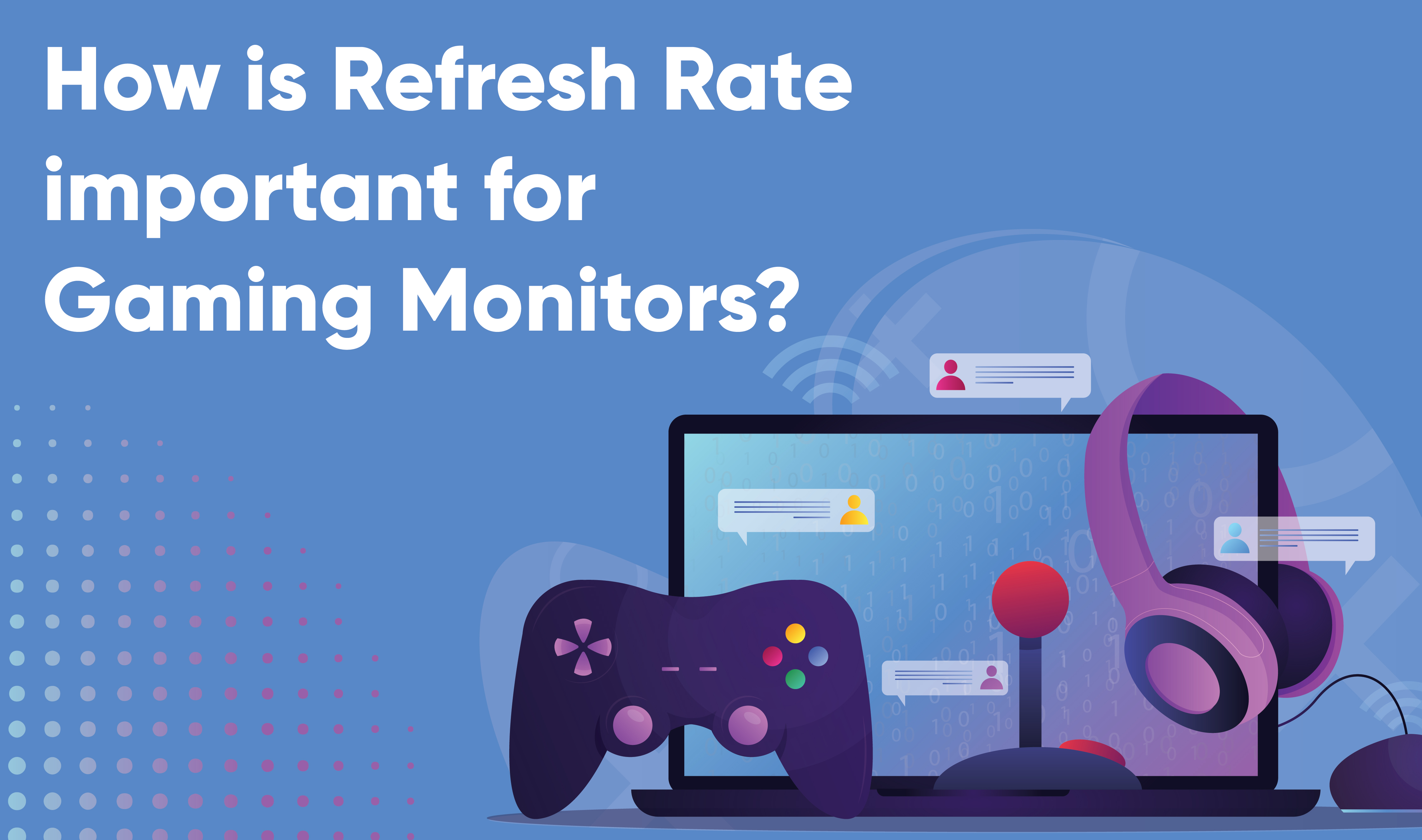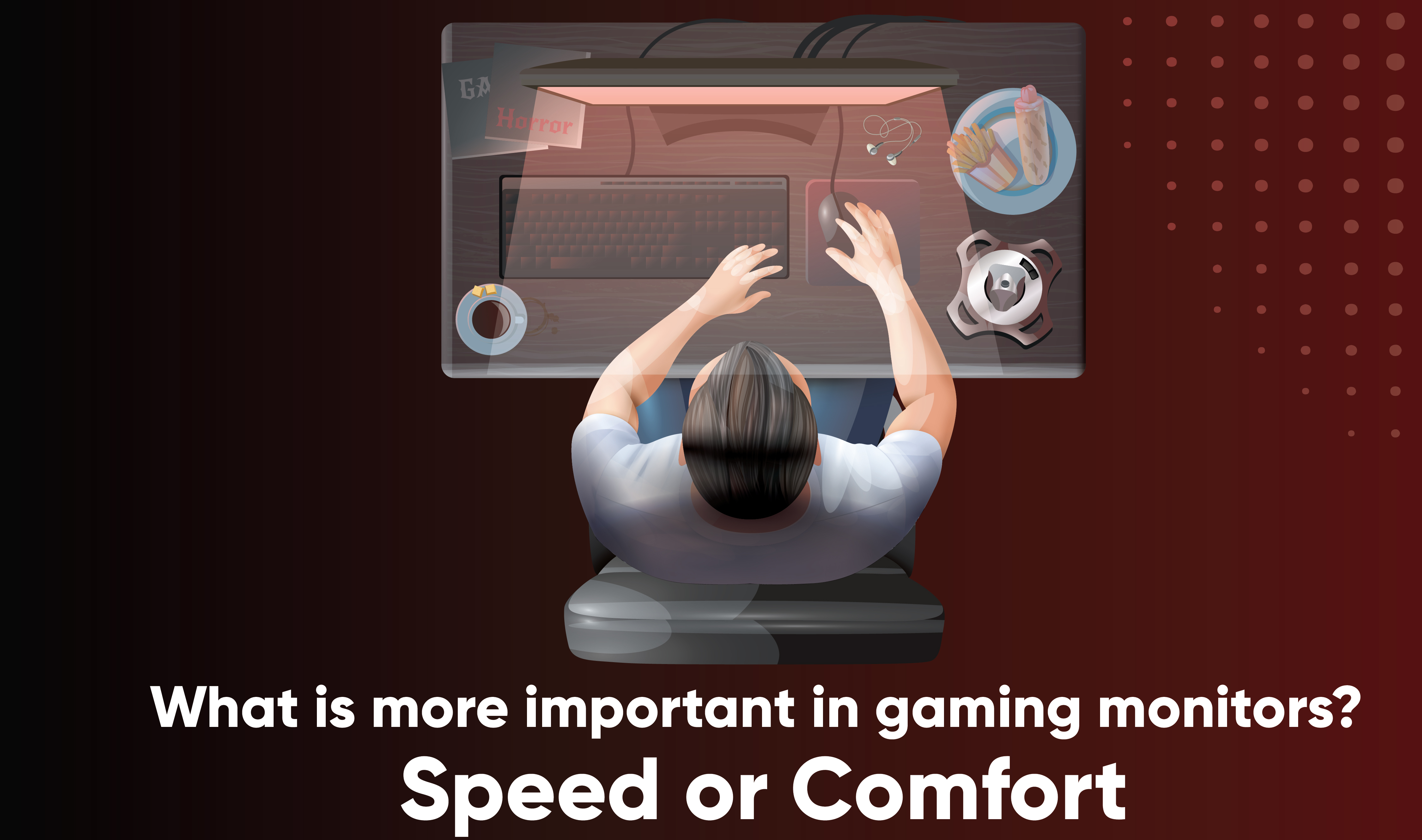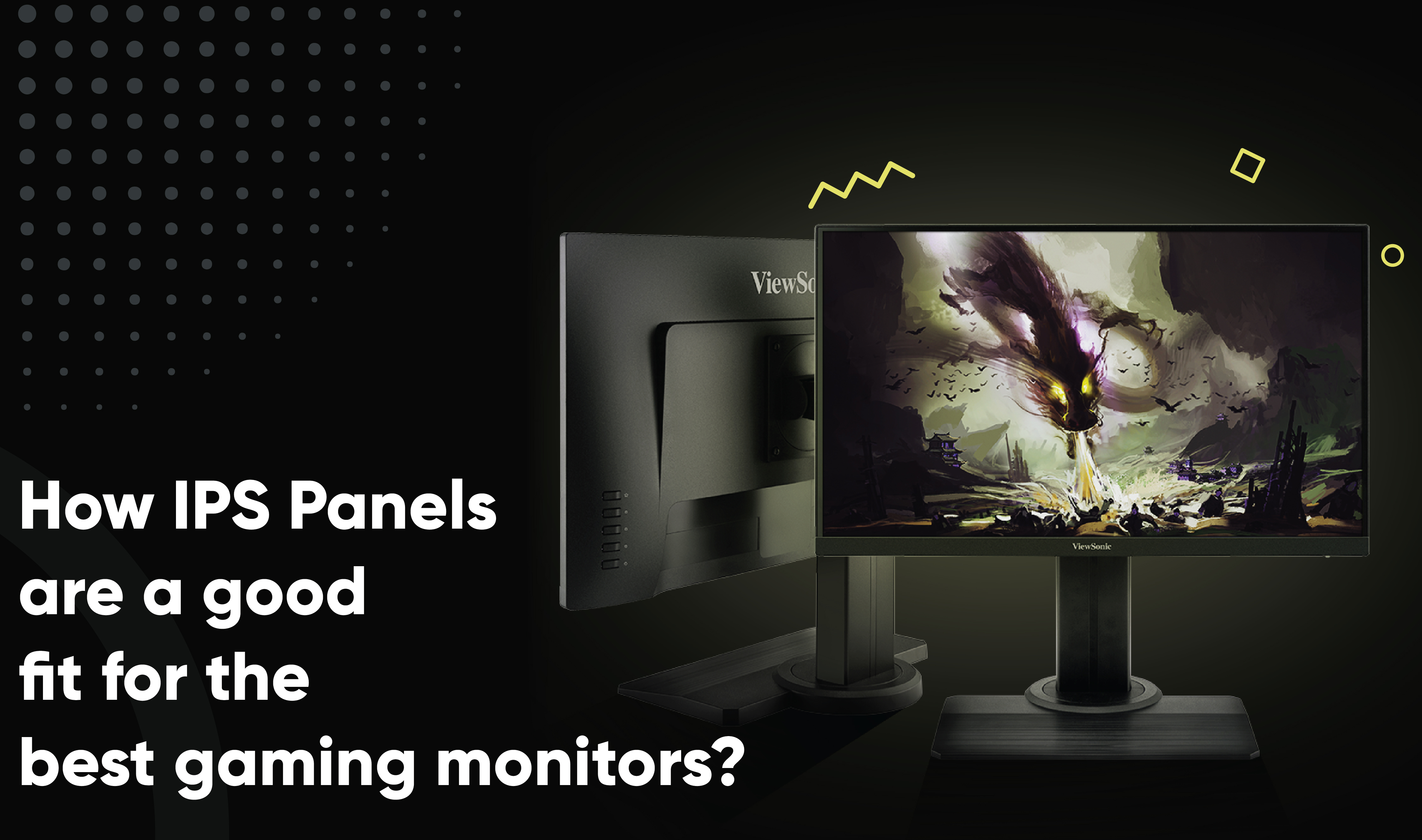18/04/21
How is Refresh Rate important for gaming monitors?
While looking to buy a new gaming monitor, there are plenty of factors to be considered, including resolution, size, panel, and aspect ratio. Another one of the most important aspects one might hear about is the refresh rate. The number of times a display image is refreshed per second in your monitor is known as the Refresh rate. The higher refresh rate ensures that images appear smooth and it is expressed in Hertz (Hz). A higher refresh rate means that more information will reach your eyes in the same span of time, which leads to smoother-looking motion. Not to forget that video is technically just a series of images that are being shown rapidly to have the effect of motion. The refresh rate is often confused with frame rate, even though the frame rate is expressed with (fps) standing for frames per second it is the number of images produced by your video card per second. However, you need a video card producing at least 144 fps in case of a 144 Hz refresh rate. Although a higher refresh rate monitor doesn’t make any difference even if you’re watching a movie at classic 24 frames per second, you are more likely to see a substantial gain while playing a game on a premium gaming monitor where you can run a game at 100 fps if your monitor can refresh that many times per second.
Substantially, the refresh rate regulates the maximum framerate you actually get to see on your monitor. If your monitor is just capable of 60Hz while your system can hit 90fps in a game, the gameplay will end up running at 60fps on your screen. To put it another way, the better your gaming monitor, the higher the refresh rate you’ll require. Super-high refresh rates are more relevant to gamers enjoying fast-paced esports titles since such games utilize superior optimization and more simplistic graphics to run at overhead framerates. Many professional gamers testify to improved reaction times and circumstantial awareness in games with a higher refresh rate. A higher refresh rate doesn’t help in the case of a monitor having a lower input response rate than you’re adjusted with. Unlike refresh rates, a slower response time is often better. The response rate is affected up to a point by refresh rate, not directly though. The response time directs the maximum refresh rate of the monitor possible; for example, a response rate of 6.95 milliseconds or less is definitely required for a 144Hz gaming monitor, since in order to cram a hundred and forty-four frames into a single second that speed is needed.
Conclusively, high refresh rates are the major concern only for serious gamers while casual gamers can enjoy most titles at 60 frames per second. However, in the case of general monitor users, they don’t have much use for higher frame rates at all. One of the major issues faced in high-level gaming is input lag, which is basically the delay faced between making input and the game recognizing that input. Input lag can be reduced by high refresh rate monitors since there is a shorter amount of time that passes between the action happening on-screen and the input.
Substantially, the refresh rate regulates the maximum framerate you actually get to see on your monitor. If your monitor is just capable of 60Hz while your system can hit 90fps in a game, the gameplay will end up running at 60fps on your screen. To put it another way, the better your gaming monitor, the higher the refresh rate you’ll require. Super-high refresh rates are more relevant to gamers enjoying fast-paced esports titles since such games utilize superior optimization and more simplistic graphics to run at overhead framerates. Many professional gamers testify to improved reaction times and circumstantial awareness in games with a higher refresh rate. A higher refresh rate doesn’t help in the case of a monitor having a lower input response rate than you’re adjusted with. Unlike refresh rates, a slower response time is often better. The response rate is affected up to a point by refresh rate, not directly though. The response time directs the maximum refresh rate of the monitor possible; for example, a response rate of 6.95 milliseconds or less is definitely required for a 144Hz gaming monitor, since in order to cram a hundred and forty-four frames into a single second that speed is needed.
Conclusively, high refresh rates are the major concern only for serious gamers while casual gamers can enjoy most titles at 60 frames per second. However, in the case of general monitor users, they don’t have much use for higher frame rates at all. One of the major issues faced in high-level gaming is input lag, which is basically the delay faced between making input and the game recognizing that input. Input lag can be reduced by high refresh rate monitors since there is a shorter amount of time that passes between the action happening on-screen and the input.
Press Kit
- [Press Release] How is Refresh Rate important for gaming monitors?



